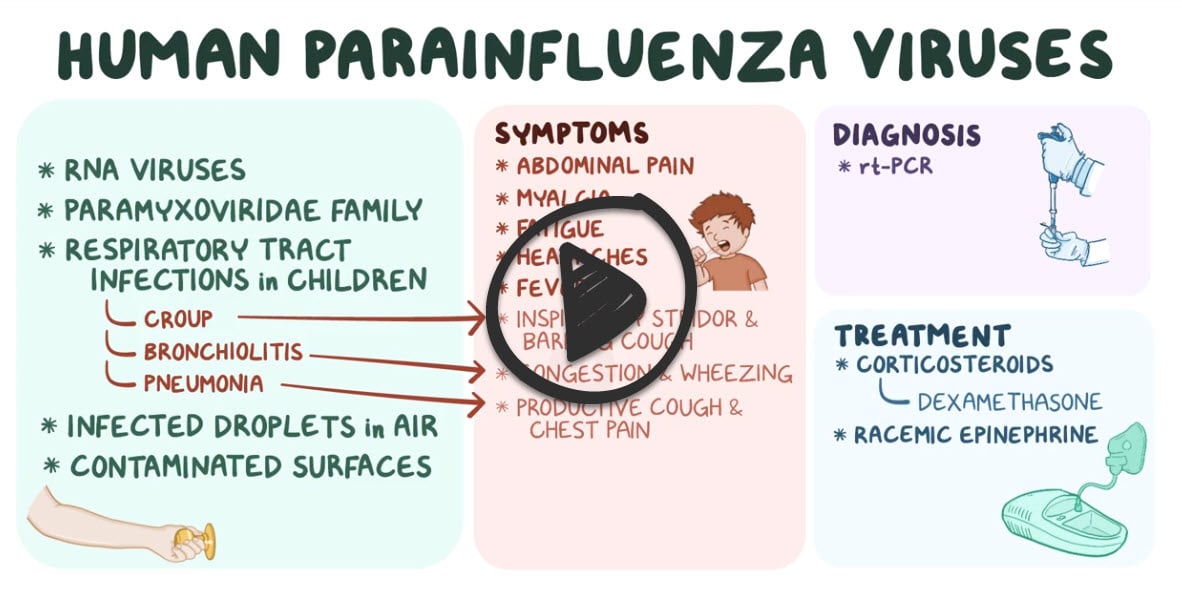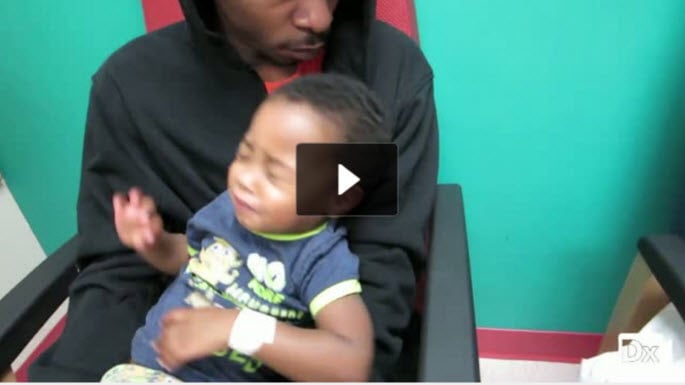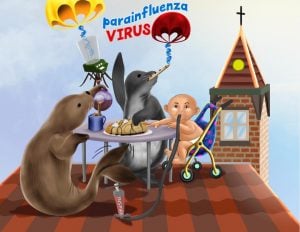2 y/o with cough and stridor
Patient will present as → a 2-year-old boy who is brought to you by his father, who is concerned about a "barking cough," mild fever, and a hoarse voice. He reports that he had a runny nose last week that has since resolved. Physical exam reveals inspiratory stridor. AP neck film is shown here.
To watch this and all of Joe-Gilboy PA-C's video lessons, you must be a member. Members can log in here or join now.
Croup is caused by parainfluenza virus
- Commonly in children 6 months - 3 years of age
- Fall and early winter months (same time of year as bronchiolitis)
- Barking cough and stridor
Treatment is antipyretics, hydration, humidified air (or oxygen), nebulized racemic epinephrine (only if signs of distress), and corticosteroids (dexamethasone)
- Prognosis is excellent
 Osmosis Osmosis |
|
 |
Croup is a general term that describes a group of conditions characterized by edema and inflammation of the upper airway. The focus of this Picmonic is on the most common croup disorder – laryngotracheobronchitis, often abbreviated as LTB, which often leads to hospitalization. The other group disorders are acute epiglottitis, acute spasmodic laryngitis, and acute tracheitis.
Play Video + QuizPicmonic Parainfluenza Virus
Parainfluenza virus is a single-stranded RNA paramyxovirus that causes croup in children. Croup is an upper respiratory infection that presents with respiratory difficulty and a characteristic barking cough. In adults, it causes mild upper respiratory infections. However, parainfluenza infections can cause inflammation and swelling in the upper airway to the point of obstruction in children. Severe cases present with inspiratory stridor, and airway swelling can be seen on a frontal neck X-Ray indicated by a steeple sign. These cases require immediate medical intervention.
Play Video + QuizQuestion 1 |
drooling Hint: Drooling and a "hot potato" voice are seen with epiglottitis, not viral croup. | |
high fever Hint: Fever is usually absent or low grade in patients with viral croup. | |
"hot potato" voice Hint: See A for explanation. | |
barking cough |
Question 2 |
Intravenous antibiotics Hint: Laryngotracheobronchitis is caused by viruses, not bacteria, and therefore antibiotic therapy is not indicated. | |
Endotracheal intubation Hint: If patients fail to respond to initial treatment and progress to impending respiratory failure, endotracheal intubation is then indicated. | |
Inhaled mucolytic agent Hint: Inhaled mucolytic agents are not indicated in the treatment of laryngotracheobronchitis. | |
Nebulized racemic epinephrine |
Question 3 |
Nebulized albuterol Hint: Viral croup is an upper airway disease and there is no role for bronchodilator therapy. | |
Nebulized epinephrine Hint: Nebulized racemic epinephrine is only indicated in the treatment of croup in cases of moderate to severe rest stridor, respiratory distress, or hypoxia. | |
Oral amoxicillin Hint: Croup is almost always a viral illness and antibiotics have no role in the treatment of this condition. | |
Oral dexamethasone |
Question 4 |
Rubeola virus Hint: See D for explanation. | |
Adenovirus Hint: See D for explanation. | |
Influenza virus Hint: See D for explanation. | |
Parainfluenza virus |
|
List |
References: Merck Manual · UpToDate


 Lecture
Lecture





